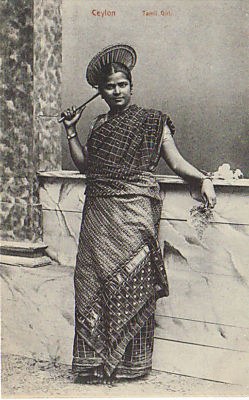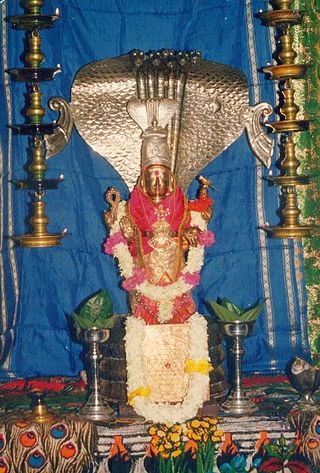Related Research Articles

Sri Lankan Tamils, also known as Ceylon Tamils or Eelam Tamils, are Tamils native to the South Asian island state of Sri Lanka. Today, they constitute a majority in the Northern Province, form the plurality in the Eastern Province and are in the minority throughout the rest of the country. 70% of Sri Lankan Tamils in Sri Lanka live in the Northern and Eastern provinces.
Karaiyar is a Sri Lankan Tamil caste found mainly on the northern and eastern coastal areas of Sri Lanka, and globally among the Tamil diaspora.

The Sri Lankan Tamil dialects or Ceylon Tamil or commonly in Tamil language Eelam Tamil are a group of Tamil dialects used in Sri Lanka by its native Tamil speakers that is distinct from the dialects of Tamil spoken in Tamil Nadu. It is broadly categorized into three sub groups: Jaffna Tamil, Batticaloa Tamil, and Negombo Tamil dialects. But there are a number of sub dialects within these broad regional dialects as well. These dialects are also used by ethnic groups other than Tamils and Muslims such as Sinhalese people, Portuguese Burghers and the indigenous Coastal Vedda people.
Professor Karthigesu Sivathamby was a Sri Lankan Tamil literary historian, author and academic.

Nainativu, is a small but notable island off the coast of Jaffna Peninsula in the Northern Province, Sri Lanka. The name of the island alludes to the folklore inhabitants, the Naga people. It is home to the Hindu shrine of Nagapooshani Amman Temple; one of the prominent 64 Shakti Peethas, and the Buddhist shrine Nagadeepa Purana Viharaya.
Vanniar or Vanniyar was a title borne by chiefs in medieval Sri Lanka who ruled in the Chiefdom of Vavuni regions as tribute payers to the Jaffna vassal state. There are a number of origin theories for the feudal chiefs, coming from an indigenous formation. The most famous of the Vavni chieftains was Pandara Vannian, known for his resistance against the British colonial power.

The Naga people are believed by some to be an ancient tribe who once inhabited Sri Lanka and various parts of Southern India. There are references to Nagas in several ancient texts such as Mahavamsa, Manimekalai, Mahabharata and also in other Sanskrit and Pali literature. They were generally represented as a class of super-humans taking the form of serpents who inhabit a subterranean world.
Thiriyai is a small village in the eastern Trincomalee District of Sri Lanka. It is situated about 25 miles north of Trincomalee town through Nilaveli. The total population of the village is 640 at the 2012 census.
When to date the start of the history of the Jaffna kingdom is debated among historians.

The Anaikoddai seal is a soapstone seal that was found in Anaikoddai, Sri Lanka during archeological excavations of a megalithic burial site by a team of researchers from the University of Jaffna. The seal was originally part of a signet ring and contains one of the oldest Brahmi inscriptions mixed with megalithic graffiti symbols found on the island. It was dated paleographically to the early third century BC.

Professor Kandasamypillai Kanapathypillai was a leading Ceylon Tamil academic, author and head of the Department of Tamil at the University of Ceylon, Peradeniya for 18 years.
Velupillai Appapillai was a Sri Lankan physicist and academic. He was the dean of the Faculty of Science at the University of Ceylon, Peradeniya.

K. Kailasanatha Kurukkal was a researcher, writer and professor of Jaffna, Sri Lanka.
Professor Sivasubramaniam Pathmanathan is a Sri Lankan Tamil historian, academic, author and current chancellor of the University of Jaffna.
The Pancha Ishwarams are five coastal ancient kovils (temples) built in dedication to the Hindu supreme being Ishwara in the form of the god Shiva, located along the circumference of Sri Lanka.
Alvappillai Veluppillai was a Sri Lankan Tamil academic, historian and author.

Ranaweera Appuhamilage Leslie Herbert Gunawardana was a Sri Lankan historian, academic, politician and government minister.
Tamil inscriptions in Sri Lanka date from the centuries before Christ to the modern era. The vast majority of inscriptions date to the centuries following the 10th century AD, and were issued under the reigns of both Tamil and Sinhala rulers alike. Out of the Tamil rulers, almost all surviving inscriptions were issued under the occupying Chola dynasty, whilst one stone inscription and coins of the Jaffna Kingdom have also been found.